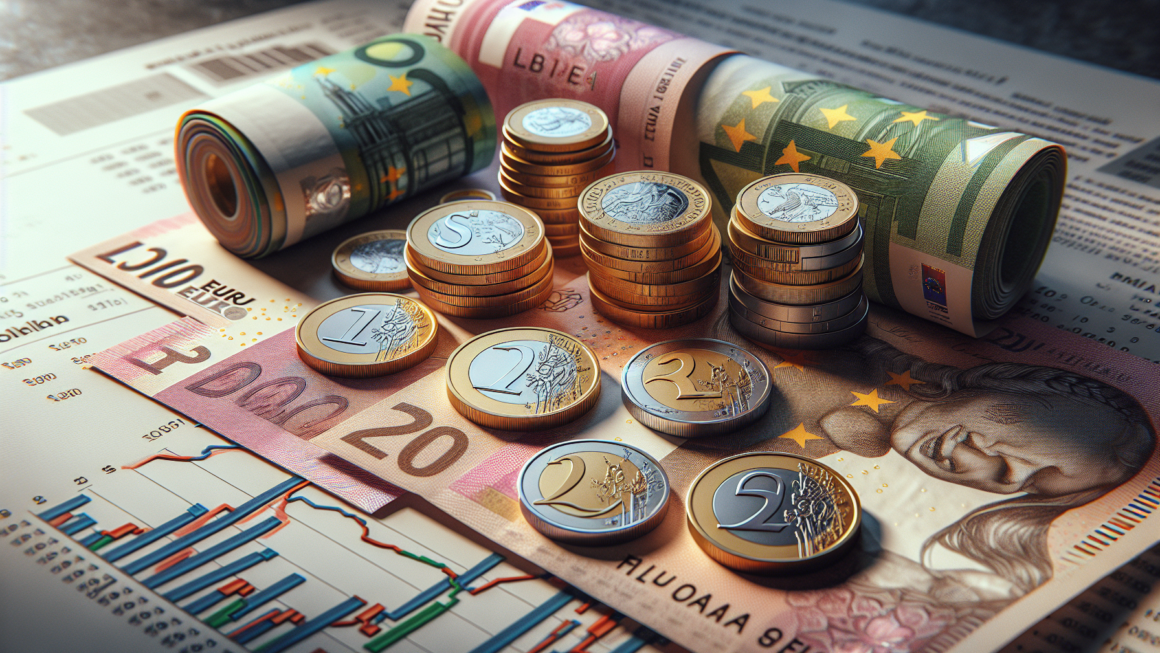Lithuania, a Baltic country with a rich history, has undergone significant changes in its monetary system over the years. From the Lithuanian litas to the adoption of the euro, the nation’s currency has evolved to meet the needs of its economy and align with European Union standards. This comprehensive guide explores the history of Lithuania’s currency, the transition from the litas to the euro, and practical information for using euros in Lithuania.
Overview of Lithuania’s Currency History
Lithuania’s currency history is marked by several significant milestones, reflecting the country’s political and economic transformations. Understanding the evolution of Lithuania’s monetary system provides valuable context for its current use of the euro.
Before delving into the specifics of the Lithuanian litas and the adoption of the euro, it’s essential to acknowledge the broader historical context that shaped Lithuania’s currency landscape. From its independence in 1918 to its incorporation into the Soviet Union and subsequent re-establishment of independence in 1990, Lithuania has navigated complex economic and political transitions.
The Lithuanian Litas: Lithuania’s Former Currency
The Lithuanian litas (ISO code: LTL) served as the official currency of Lithuania from 1922 to 1941 and again from 1993 to 2014. Introduced after Lithuania gained independence from the Soviet Union, the litas played a crucial role in the country’s economic development and stability.
During its circulation, the Lithuanian litas was subdivided into 100 centų and was available in both banknote and coin denominations. The banknotes featured prominent Lithuanian figures, landmarks, and cultural symbols, reflecting the nation’s heritage and identity.
Lithuania’s Adoption of the Euro
On January 1, 2015, Lithuania officially adopted the euro (€) as its national currency, becoming the 19th member of the eurozone. The decision to join the eurozone was driven by several factors, including closer integration with the European Union, enhanced trade opportunities, and increased financial stability.
The transition from the Lithuanian litas to the euro was carefully planned and executed. A fixed exchange rate of 3.45280 litas to 1 euro was established, ensuring a smooth conversion process. The Bank of Lithuania, the country’s central bank, played a vital role in managing the currency changeover and educating the public about the new currency.
Lithuanian Litas to Euro Conversion
Understanding the conversion rate between the Lithuanian litas and the euro is essential for those who still possess litas banknotes or need to calculate historical prices. The following section explores the exchange rate and provides practical examples of converting litas to euros.
To convert Lithuanian litas to euros, the fixed exchange rate of 3.45280 litas to 1 euro is used. This means that for every 1 litas, you would receive approximately 0.29 euros. Conversely, 1 euro would be equivalent to approximately 3.45280 litas.
Converting Lithuanian Litas to Euros and Other Currencies
While the official conversion rate between the Lithuanian litas and the euro is fixed, converting litas to other currencies requires referencing current exchange rates. Online currency converters and financial institutions can provide up-to-date exchange rates for various currency pairs.
When converting Lithuanian litas to euros or other currencies, it’s important to note that exchange rates can fluctuate based on market conditions. Therefore, the actual amount received may vary slightly from the calculated value.
| Lithuanian Litas (LTL) | Euro (EUR) |
|---|---|
| 1 LTL | 0.29 EUR |
| 10 LTL | 2.90 EUR |
| 100 LTL | 29.00 EUR |
Historical Exchange Rates: Litas to Euro
Analyzing historical exchange rates between the Lithuanian litas and the euro can provide insights into the currency’s performance over time. Prior to the adoption of the euro, the litas-to-euro exchange rate fluctuated based on economic and political factors.
It’s worth noting that historical exchange rates are primarily relevant for academic or analytical purposes, as the Lithuanian litas is no longer in circulation. However, understanding past exchange rate trends can offer valuable context for Lithuania’s economic history and its transition to the euro.
Using Euros in Lithuania: Practical Information
Now that Lithuania has fully transitioned to the euro, visitors and residents alike need to be familiar with the practicalities of using the currency in everyday transactions. This section covers essential information about euro banknotes and coins, as well as tips for currency exchange and spending in Lithuania.
When using euros in Lithuania, it’s important to familiarize yourself with the various denominations of banknotes and coins. Euro banknotes come in seven denominations: €5, €10, €20, €50, €100, €200, and €500. However, the €200 and €500 notes are rarely used in everyday transactions.
Euro Banknotes and Coins in Circulation
Euro banknotes feature a common design across all eurozone countries, with each denomination displaying architectural styles from different European cultural periods. The banknotes are designed with advanced security features to prevent counterfeiting.
Euro coins, on the other hand, have a common side and a national side. The common side features the denomination and a map of Europe, while the national side showcases unique designs chosen by each eurozone country. In Lithuania, the national side of the coins depicts various symbols and motifs related to the country’s history and culture.
Tips for Currency Exchange and Spending in Lithuania
When exchanging currency or making purchases in Lithuania, there are a few key points to keep in mind:
- ATMs: ATMs are widely available throughout Lithuania, particularly in cities and towns. They offer a convenient way to withdraw euros using foreign debit or credit cards. However, be aware of potential fees charged by your bank for international transactions.
- Credit and Debit Cards: Most businesses in Lithuania, including restaurants, shops, and hotels, accept major credit and debit cards. Contactless payments are also increasingly common. However, it’s always a good idea to carry some cash as a backup.
- Currency Exchange: If you need to exchange foreign currency for euros, it’s best to do so at banks or reputable currency exchange offices. Avoid exchanging money at airports or tourist hotspots, as they often offer less favorable exchange rates and charge higher fees.
Currency Services for Lithuania
For individuals and businesses dealing with Lithuanian currency, various services are available to facilitate transactions and manage funds. These services range from borderless accounts to international money transfers.
When choosing a currency service provider, consider factors such as exchange rates, fees, transaction speeds, and the level of customer support offered. It’s also essential to ensure that the provider is reputable and complies with relevant regulations.
Wise Borderless Account for Lithuanian Currency
Wise, formerly known as TransferWise, offers a borderless account that allows users to hold, manage, and convert multiple currencies, including euros. With a Wise account, you can send and receive money internationally, benefiting from competitive exchange rates and low fees.
The Wise debit card, linked to the borderless account, enables you to spend euros in Lithuania and other countries without incurring hidden charges. This can be particularly advantageous for travelers or businesses with international transactions.
Sending Money to Lithuania
When sending money to Lithuania from abroad, it’s crucial to consider the exchange rate and any associated fees. Traditional banks often charge high fees and offer less favorable exchange rates compared to specialized money transfer services.
Services like Wise, OFX, and XE Money Transfer provide cost-effective solutions for sending money to Lithuania. These platforms typically offer better exchange rates and lower fees than banks, making them a popular choice for international money transfers.
See also:




